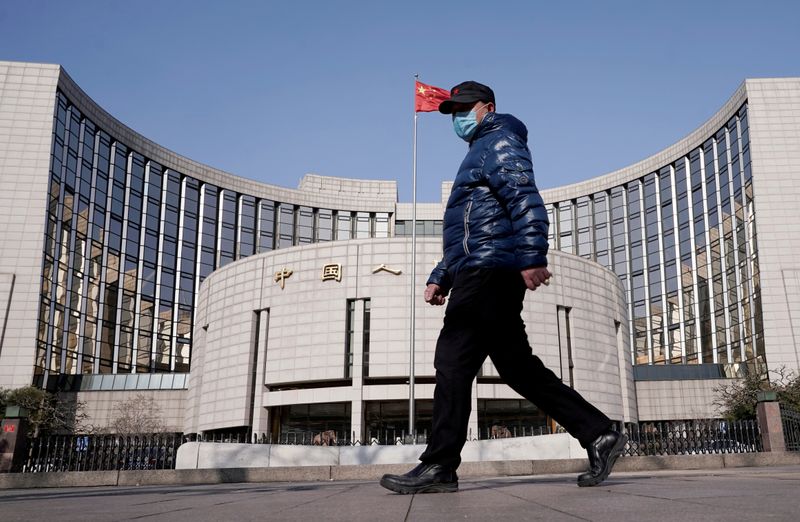BEIJING (Reuters) – New bank lending in China fell sharply in October from the previous month, but not quite as badly as forecast by analysts who expect the central bank to ease monetary policy cautiously due to risks of stagflation.
Data released on Wednesday by the People’s Bank of China showed banks extended new loans of 826.2 billion yuan ($129.27 billion) in October, down sharply from 1.66 trillion in September but better than the 800 billion expected in a Reuters poll of analysts.
The new loans were higher than 689.8 billion yuan a year earlier.
“There are some signs that PBOC policy is turning more supportive in response to strains in the property sector. As such, we think this might be the trough in credit growth,” Capital Economics said in a note.
“But the usual lags mean that tight credit conditions will remain a headwind to economic activity for a while.”
Outstanding yuan loans grew 11.9% from a year earlier, in line with expectations and hovering at the lowest since May 2002.
Last month, central bank Governor Yi Gang said growth of China’s money supply and total social financing were largely in line with nominal GDP growth, and liquidity was ample.
The PBOC is likely to move cautiously on loosening monetary policy to bolster the economy, as slowing economic growth and soaring factory inflation fuel concerns over stagflation, policy sources and analysts said.
MORTGAGES PICKING UP
Wen Bin, a senior economist at Minsheng Bank, said he expected the central bank to rely on targeted policy tools in the near term to support small firms and some other sectors.
On Monday, the PBOC said it would provide low-cost loans to financial institutions to help firms cut carbon emissions, supporting China’s long-term carbon-neutrality goals.
Analysts at Goldman Sachs estimated the PBOC could provide funding support of about 1.2 trillion yuan over the coming year.
Household loans, mostly mortgages, fell to 464.7 billion yuan in October from 788.6 billion yuan in September, while corporate loans dipped to 310.1 billion yuan from 980.3 billion yuan, central bank data showed.
“Medium- to long-term household loans exceeded medium- to long-term corporate loans, indicating the pace of housing loan issuance is accelerating,” said Zhou Hao, senior economist at Commerzbank.
New mortgage loans reached 348.1 billion yuan in October, up by 101.3 billion yuan from September, the central bank said.
Growth of outstanding total social financing (TSF), a broad measure of credit and liquidity in the economy, was at 10.0% in October, unchanged from September.
TSF includes off-balance sheet forms of financing outside the conventional bank lending system, such as initial public offerings, loans from trust companies and bond sales.
In October, TSF fell to 1.59 trillion yuan from 2.9 trillion yuan in September. Analysts polled by Reuters had expected October TSF of 1.6 trillion yuan.
Broad M2 money supply grew 8.7% from a year earlier, the central bank data showed, above the Reuters poll forecast of 8.3%. M2 rose 8.3% in September.
China’s factory gate inflation hit a 26-year high in October as coal prices soared amid a power crunch in the industrial heartland, further squeezing profit margins for producers and heightening stagflation concerns.
(Reporting by Judy Hua and Kevin Yao; Editing by Simon Cameron-Moore and Alison Williams)























